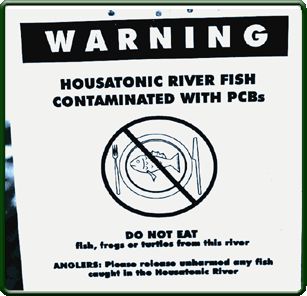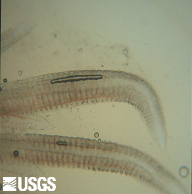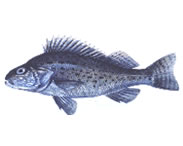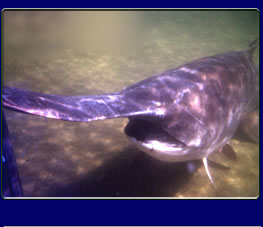- Home
- About S&T
- Taxa/Organisms
- Ecosystems
- Issues
- Methods & Tools
- Reports & Publications
- Location
- Search
June 2001 | Publisher: USGS | Science Center: Upper Midwest Environmental Sciences Center (UMESC, LaCrosse) | Format: URL
www.umesc.usgs.gov — This report describes an electronic database containing 474 annotated citations that are relevant to fish passage through dams in large temperate floodplain rivers. The goal of this project was to survey the literature to help define the potential ecological consequences of restricted fish passage through dams in the Upper Mississippi River System More...

2001 | Publisher: USGS | Science Center: Upper Midwest Environmental Sciences Center (UMESC, LaCrosse) | Format: URL
www.umesc.usgs.gov — Research at the Upper Midwest Environmental Center, which gathered detailed observations on tree swallow nesting success and contaminant concentrations in 1998-2000, to guide EPA and the U.S. Fish and Wildlife Service in effectively managing the risk of chemical contaminants to wildlife and the environment.

Publisher: USGS | Science Center: Western Fisheries Research Center (WFRC, Seattle) | Format: URL
wfrc.usgs.gov — Threatened and endangered salmonids in the Pacific Northwest often use backwaters and wetlands as they migrate toward the ocean, however our understanding of the role of wetlands to juvenile salmonids is limited. The major Objective of this study was to determine whether juvenile steelhead were being tapped on the wetland during spring, and More...

Publisher: USGS | Science Center: Western Fisheries Research Center (WFRC, Seattle) | Format: URL
wfrc.usgs.gov — Mercury contamination from historic gold mining operations is widespread in many rivers, lakes, and reservoirs on the western slopes of the Sierra Nevada. A multidisciplinary investigation by USGS is attempting to better understand mercury dynamics and to identify hot spots within Camp Far West Reservoir in order to determine if remediation More...

Publisher: USGS | Science Center: Western Fisheries Research Center (WFRC, Seattle) | Format: URL
wfrc.usgs.gov — Many diseases of trout and salmon persist in our cultured fish stocks today, despite improvements in fish culture practices and years of research on vaccines and chemotherapeutants. An excellent example is bacterial kidney disease (BKD), caused by the bacterium Renibacterium salmoninarum. Infections by R. salmoninarum are considered by many to be More...

Publisher: USGS | Science Center: Western Fisheries Research Center (WFRC, Seattle) | Format: URL
wfrc.usgs.gov — A management decision was made in 1994 to increase survival of migrating juvenile salmon by increasing the proportion of river water and fish passed via spill at Snake and Columbia river dams. One result of this action was an increase in dissolved gas supersaturation, which can lead to gas bubble disease in fish. This disease can lead to More...

Publisher: USGS | Science Center: Western Fisheries Research Center (WFRC, Seattle) | Format: URL
wfrc.usgs.gov — Little is known about the importance of estuarine habitats for juvenile chinook salmon (Oncorhynchus tshawytscha), hence managers are uncertain of the appropriate levels of protection for such habitats. Research to determine the length of residence and growth of juvenile chinook salmon in the Skagit River estuary will indicate the importance of More...

Publisher: USGS | Science Center: Western Fisheries Research Center (WFRC, Seattle) | Format: URL
wfrc.usgs.gov — Fall chinook salmon (Oncorhynchus tshawytscha) in the Snake River are currently listed as threatened under the Endangered Species Act (ESA). Although fish bypass systems reduce the mortality of fish entering turbine intakes at mainstem hydroelectric dams, they are only operated during the spring, summer, and early fall during the peaks of seaward More...

Publisher: USGS | Science Center: Upper Midwest Environmental Sciences Center (UMESC, LaCrosse) | Format: URL
www.umesc.usgs.gov — Eurasian Ruffe pose a threat to native fish because they(1) mature quickly, (2) have a high reproductive capacity, and (3) easily adapt to new environments. Ruffe were first detected in western Lake Superior in 1986. UMESC scientists are conducting research on various types of piscicides (chemicals that kill fish). They are attempting to develop More...

Publisher: USGS | Science Center: Upper Midwest Environmental Sciences Center (UMESC, LaCrosse) | Format: URL
www.umesc.usgs.gov — Paddlefish (Polyodon spathula) have been lost from four states and Canada, and 11 of 22 states within the remaining species range now list the paddlefish as endangered, threatened, or a species of special concern. Restoration of paddlefish populations is a shared goal of many state and federal agencies. UMESC scientists, in collaboration with the More...

Publisher: USGS | Science Center: Upper Midwest Environmental Sciences Center (UMESC, LaCrosse) | Format: URL
www.umesc.usgs.gov — Zebra mussels have caused drastic declines in native clam and mussel populations in some locations. Zebra mussels compete with other invertebrates and young fish for plankton, the primary food source for these groups. UMESC scientists are investigating the effects zebra mussels are having on the riverine ecosystem. This study examines the effects More...

Publisher: USGS | Science Center: Forest and Rangeland Ecosystem Science Center (FRESC, Corvallis) | Format: URL
fresc.usgs.gov — The river otter (Lontra canadensis) is a top predator of most aquatic food chains. The goal of this study is to further evaluate the relationship among the contaminants and observed reproductive organ hypoplasia in young male river otters, their occurrence, and mode of action or mechanism that causes hypoplasia with a larger series of data from More...
